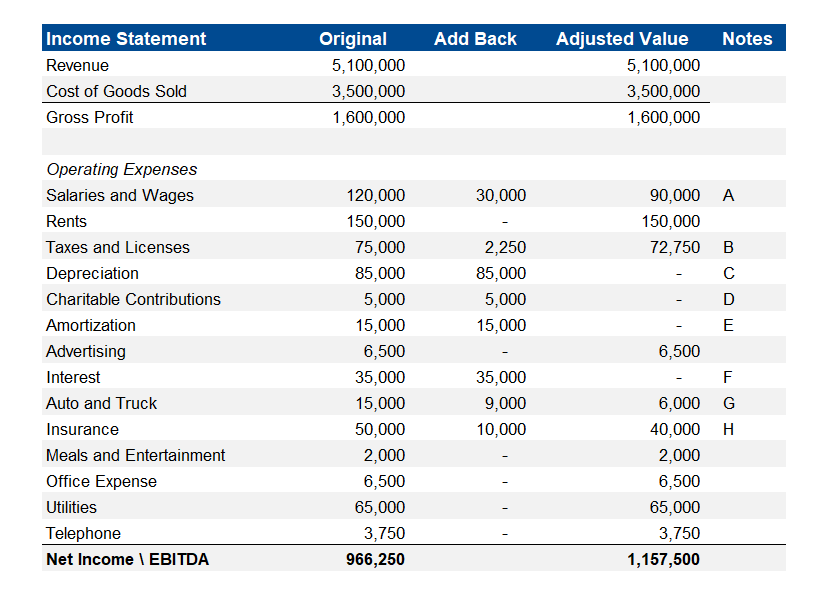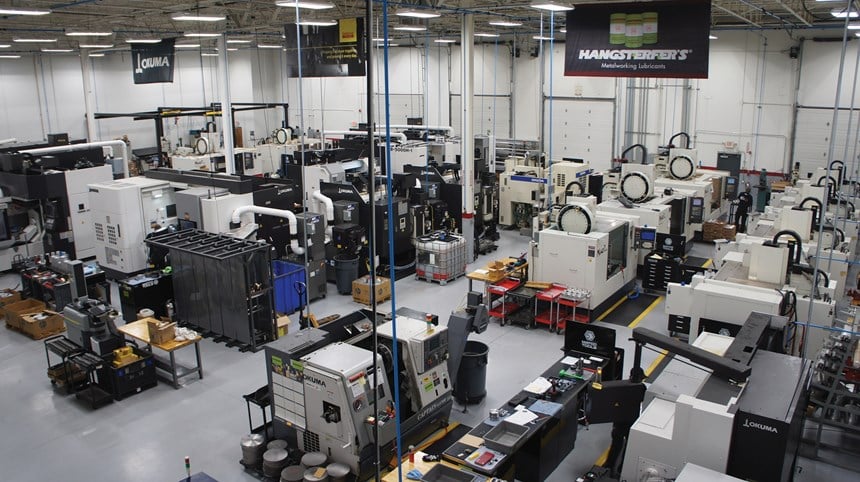How to Value a Manufacturing Business
Sellers Business Valuation Seller Articles Seller FAQ Valuation
If you own a manufacturing company, one of the most important questions to ask is: “How much is my manufacturing company worth?”
Answering this question is the first step in the process of planning to sell your business.
In this article, we’ll teach you the most common valuation method for manufacturing companies to help you arrive at a ballpark estimate for the sale of your business.
However, please understand this does not replace getting your business valued by trained professionals who use several methods to arrive at the most probable sales price.
Now, let’s dive into the valuation process you should follow when valuing a manufacturing business and debunk some common myths along the way.
The Most Common Valuation Technique for the Manufacturing Industry
When valuing a manufacturing company making $1M-$25M in revenue, you will generally use the following methods:
- The Multiple of Earnings
- Discounted Cash Flow
- Buyer Test
For the scope of this article, we'll use the most widely-used method for valuation: The Multiple of Earnings method.
Here are a few terms you need to know before you proceed:
- Earnings - The profit you receive from the business as the owner.
- Add-backs - Discretionary expenses. Expenses the new buyer would not have, or large one-time expenses that you “add back” to your net profit.
- Adjusted EBITDA - A calculation of your earnings that you can use to value your business.
- Multiple - The multiple we’ll apply to your Adjusted EBITDA - this is a measure of how valuable your business is with its level of risk.
- Business value - Your business’ sales price.
To break it down further, I’ll explain how to calculate your earnings as Earnings Before Interest, Taxes, Depreciation, and Amortization (EBITDA) below.
The Multiple of Earnings Method for a Manufacturing Business
This method starts with the following equation:
Adjusted EBITDA (earnings) x Industry Multiple = Business Value
In this example, we’re using adjusted EBITDA, because the example company has earnings greater than $1M and will likely be purchased by a strategic or private equity buyer.
Adjusted EBITDA represents the sum of all financial benefits an owner receives from the business minus the cost to hire an employee to replace any owner responsibilities.
To calculate Adjusted EBITDA, you will need to remove certain expenses from your income statement or tax return.
MIDSTREET TIP
Businesses can either be valued based on a multiple of EBITDA or SDE (Seller's Discretionary Earnings). If your profits are less than $1M, check out our in-depth guide on how to calculate SDE.
Add-Backs Explained When Calculating Adjusted EBITDA
To determine Adjusted EBITDA, we start with the net income from your most recent year or the past 12 months, as shown by your income statement or tax return. Then, we “add back” some expenses to the net income.
The most common add-backs are:
- Officer’s salary minus the cost of a business manager
- Company’s share of owner’s payroll tax
- Officer’s health insurance
- Officer’s 401k contributions
- Depreciation
- Interest
- Amortization
Other discretionary or situational add-backs include charitable contributions, leased personal vehicles, or large one-time expenses, such as one-time equipment purchases or legal settlements.
MIDSTREET TIP
If you aren't active in the day-to-day operations of the business, you don't need to adjust for an employee to replace your responsibilities. Instead, you'll simply add back your entire officer's salary if you're taking one.To see how this calculation works, let’s do an example.
Valuation Example: Custom Plastic Manufacturing
Custom Plastic Manufacturing has asked us to perform a business valuation. The company has one owner, who works full time in the business and takes a salary of $120,000.
Last year, the business:
- Donated $5,000 to help build a house for Habitat for Humanity
- Contributed approximately $10,000 towards the owner’s health insurance
- Leased the owner’s personal vehicles through the business for $9,000
MIDSTREET TIP
If there is more than one owner in your company who receives a salary and works in the business, you must add back both salaries and then expense the cost to hire an employee (or two) to replace one of the owner's responsibilities.Here is an example of Custom Plastic Manufacturing’s income statement with the add-backs noted:

Personal Expenses Added Back:
A – Officer’s Salary added back
The owner's salary is adjusted from $120,000 to $90,000 to represent reducing their salary to be market rate.
B – Company’s share of officer’s payroll taxes added back
Because the owner's salary was higher than market rate, payroll taxes were higher than necessary.
C – Depreciation
The full amount of $85,000 for depreciation is added because this is a non-cash expense. See the note on capital expenditures below for more detail.
D – Charitable Contributions
Charitable contributions weren’t tied to an increase in revenue; therefore, the full amount of $5,000 is added back.
E – Amortization
The full amount of $15,000 for amortization is added back because the buyer will have their own amortization schedule.
F – Interest Expense
The full amount of $35,000 for Interest is added back because the buyer will have a different financing scenario with different interest payments.
G – Lease payments on personal vehicles added back
The owner's personal vehicle was leased through the business meaning the payment was included on the income statement. Make sure to only add back interest if your business pays for a financed personal vehicle.
H – Owner’s health insurance added back
MIDSTREET TIP
You need a comprehensive understanding of a company to properly understand add-backs. Your business will have different expenses and add-backs. Refer back to the definition of an add-back, and carefully consider whether these expenses were discretionary or at all necessary to produce your earnings.After adjusting the financials to reflect Custom Plastic Manufacturing’s Adjusted EBITDA, the owner’s total benefit increased from $966,250 to $1,157,500.
Now our equation is:
$1,157,500 x EBITDA Multiple = Business Value
MIDSTREET TIP
In the Multiple of EBITDA method, it's customary to calculate a company's EBITDA for the three most recent years and weigh each year on a percentage scale. For the purpose of this article, we've only adjusted one year's financials.
Calculating a Multiple for a Manufacturing Company
Now that we know the EBITDA for the business, let’s determine what multiple we should apply.
To come up with an example multiple for Custom Plastic Manufacturing, we’re going to look at historic sales of other manufacturing businesses. We use several industry databases to collect comparable sales.
To help you estimate your EBITDA multiple, we put together a sample comparable sales report covering manufacturing businesses.
Download Our Manufacturing Company Comp Report
For Custom Plastic Manufacturing, we found over 100 comparable sales. After removing major outliers and narrowing it down to sales that occurred between 2018-2021, we found the following statistics:
Highest EBITDA multiple for $1M EBITDA: 5.8
Lowest EBITDA multiple for $1M EBITDA: 2.8
Average EBITDA multiple for $1M EBITDA: 3.9
We found, on average, plastic injection molding companies like this one sell for a multiple of 3.9 times EBITDA.
Now, plug in 3.9 into the equation.
$1,157,500 x 3.9 = Business Value
$1,157,500 x 3.9 = $4,514,250
By using The Multiple of EBITDA method, we’ve estimated Custom Plastic Manufacturing’s Value at $4,514,250
At this point, you may be wondering “Why do some companies sell at a 2.8 multiple, while others sell at a 5.8 multiple?”
Great question. Check out our blog “Factors that Impact the Value of Your Manufacturing Business,” where we dive into the factors that impact your multiple (and likely your earnings) in a manufacturing company.
So, what does this value mean?
The sale price of $4,514,250 does NOT include the cash, Accounts Receivable (A/R), and any personal assets you have. Depending on the buyer, deal structure, and negotiations, you may keep these assets in addition to the purchase price you receive.
Inventory, furniture, fixtures, and equipment are included in the purchase price, with some rare exceptions.
What About Equipment?
We often get the question, why don’t we add the value of the equipment to the $4,514,250?
The answer is, if you base your valuation method on the earnings of the company, you have to include all the equipment necessary to produce those earnings.
It’s also important to remember you may need to pay off liabilities at closing. If there are any loans on machinery or equipment, those liabilities are typically satisfied out of closing proceeds.
We now know how to calculate Adjusted EBITDA, and use a multiple to find an estimated selling price.
How NOT to Value a Manufacturing Business
You may have heard a few “rule of thumb” valuation techniques along the way, such as:
“Manufacturing businesses are valued at 1X revenue plus inventory”
Avoid these “one-size-fits-all” calculations based on revenue. Revenue is not an accurate indicator of company value - especially when it comes to manufacturing.
Put yourself in the buyer’s shoes - would you pay $4,000,000 for a company doing $4,000,000 in revenue, but only netting $400,000 in earnings per year (10% margins)?
That’d be a 10x multiple on earnings.
The hard truth is, your revenue isn't the driving factor for most buyers - it's profit that matters. Be sure to focus on your profitability.
Value Your Manufacturing Business Correctly
Now that you know how to value a manufacturing business, how not to value it, and what equation to use, you will be better prepared to value your manufacturing business.
There’s a lot to consider when valuing your manufacturing company and reading this blog is a great start.
But, if you want some help getting an accurate estimate of value on the business, reach out to us about a free business valuation below.
We will walk you through everything you need to know and what to consider when valuing and discuss the right time to sell your business.



